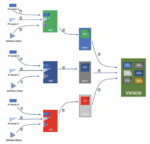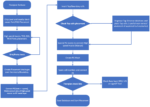Semiconductor intellectual property (IP) plays a critical role in modern system-on-chip (SoC) designs. That’s not surprising given that modern SoCs are highly complex designs that leverage already proven building blocks such as processors, interfaces, foundational IP, on-chip bus fabrics, security IP, and others. This… Read More
Tag: soc
ISO 21434 for Cybersecurity-Aware SoC Development
The automotive industry is undergoing a remarkable transformation, with vehicles becoming more connected, automated, and reliant on software. While these advancements promise convenience, comfort and efficiency to the consumers, the nature and complexity of the technologies also raise concerns for functional safety … Read More
Silicon Catalyst and Arm announce $150,000 Silicon Startup Contest!
As I sift through mounds of semiconductor press releases trying to figure out the relevance (with mixed results) I consider it a learning experience even when they don’t really tell me anything. This one however tells me two very important things:
1) Arm is a much more competitive company with the new leadership. I saw a noticeable… Read More
Speeding up Chiplet-Based Design Through Hardware Emulation
The first chiplets focused summit took place last month. So many accomplished speakers gave keynote talks on what direction should and would the Chiplets ecosystem evolution take. Corigine presented the keynote on what direction hardware emulation should and would evolve for speeding up chiplet- based designs. During a pre-conference… Read More
Achieving 400W Thermal Envelope for AI Datacenter SoCs
Successful ASIC providers offer top-notch infrastructure and methodologies that can accommodate varied demands from a multitude of customers. Such ASIC providers also need access to best-in-class IP portfolio, advanced packaging and test capabilities, and heterogeneous chiplet integration capability among other things.… Read More
Integrating High Speed IP at 5nm
Introduction:
The advancements in deep submicron technology and adding multiple functionalities to reduce costs combined with scaling existing operations means that SoC designs become ever more complex. The biggest driving factors to go below the 16nm process node are the decrease in power and the increase in performance … Read More
The CHIPS and Science Act, Cybersecurity, and Semiconductor Manufacturing
This year is proving to be a momentous one for U.S. semiconductor manufacturing. During a global chip shortage and record inflation, President Biden signed into effect the CHIPS and Science Act – which so far is the greatest boon to U.S. semiconductor manufacturing in history, with $52 billion in subsidies for chip manufacturers… Read More
WEBINAR: A Revolution in Prototyping and Emulation
This webinar will introduce to you a revolutionary new way to do prototyping and emulation at best-in-class performance, productivity, and pricing by unifying the hardware and a new software stack so one system is capable of prototyping and delivering essential emulation functionality.
Register Here
The speed of Moore’s law… Read More
SoC Verification Flow and Methodologies
We need more and more complex chips and SoCs for all new applications that use the latest technologies like AI. For example, Apple’s 5nm SoC A14 features 6-core CPU, 4 core-GPU and 16-core neural engine capable of 11 trillion operations per second, which incorporates 11.8 billion transistors, and AWS 7nm 64-bit Graviton2 custom… Read More
Podcast EP92: The Impact of a Specification-Driven Correct-by-Construction Approach on Design and Verification with Agnisys
Dan is joined by Anupam Bakshi, founder and CEO of Agnisys. Anupam has more than two decades of experience implementing a wide range of products and services in the high tech industry. Prior to forming Agnisys, he held various management and technical lead roles at companies such as Avid Technology Inc., PictureTel, Blackstone,… Read More









